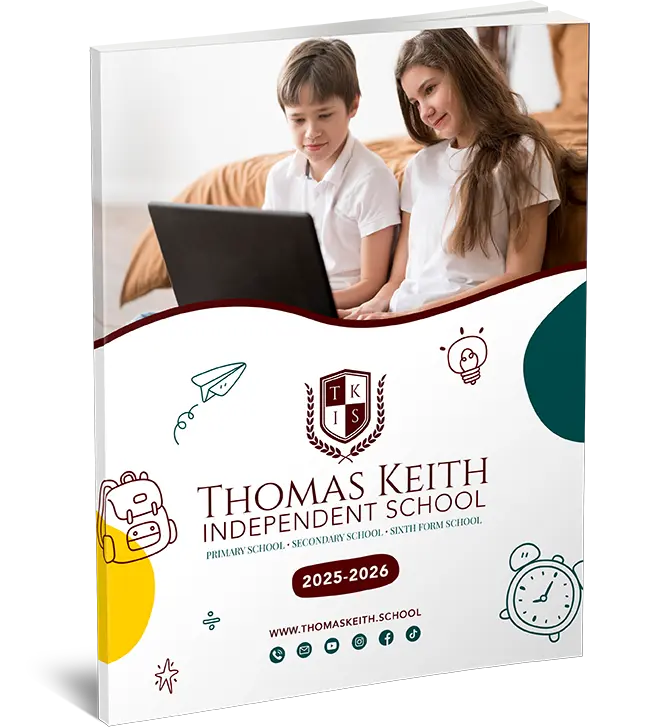
Key stage 1 Maths
Introduction To Key Stage 1 Maths
In the UK, Key Stage 1 Maths is a vital starting point for young students, usually encompassing those in Years 1 and 2, or those between the ages of 5 and 7. Through a planned curriculum intended to foster confidence and comprehension in fundamental areas such as addition, subtraction, multiplication, division, fractions, and problem-solving, children acquire critical Mathematical skills throughout this period. Schools like the Thomas Keith Online Independent School have created specialised curricula that address the needs of young students by offering a thorough, interesting method of teaching Key Stage 1 Maths.
The foundation for more advanced Maths stages is laid by the Key Stage 1 Maths curriculum, which is based on the National Curriculum for England. To help pupils through this phase and ensure that they acquire both Mathematical knowledge and the capacity to apply it in practical situations, parents, instructors, and tutors are crucial. Key Stage 1 arithmetic aims to make arithmetic both approachable and pleasurable by emphasising interactive learning and practical applications.
The fundamentals of Key Stage 1 Mathematics, effective teaching techniques, real-life teaching examples, and how independent schools like Thomas Keith Online can offer specialised learning opportunities will all be covered in this article. We’ll wrap up by answering some commonly asked questions to help educators and parents help their young Mathematicians.
Essential Elements of Key Stage 1 Maths
The framework of Key Stage 1 Maths is designed to guarantee that children understand basic Mathematical ideas at a young age. Several essential elements are included in the curriculum:
-
Place Value and Number
Overview: Key Stage 1 Maths begins with an understanding of numbers and their values. Students are exposed to numbers up to 100, which aids in their learning of how to write, count, and recognise numbers as well as their value in many contexts.
Important abilities include counting, sorting, recognising even and odd numbers, and comprehending place values (tens and ones).
Counting items in groups and classifying them according to units and tens is an example activity. Visual aids are frequently used by Thomas Keith Online Independent School to help students better grasp how numbers are grouped.
-
Subtraction and Addition
Overview: The majority of Mathematical operations are based on the fundamental addition and subtraction skills that students acquire. Gaining proficiency in these areas is essential for upcoming Mathematical subjects.
Key Skills: Adding and subtracting numbers using mental techniques, number lines, and real-life items.
Example Activities: Solving word problems in commonplace situations or adding and subtracting with counters or beads. At independent schools like Thomas Keith, interactive tools and visual aids can make these exercises more interesting.
-
Division and Multiplication
Overview: At this point, elementary types of division and multiplication are taught, usually as sharing and repeated addition. A child’s comprehension of sharing and categorising quantities is developed through these activities.
Key Skills: Understanding division as equal sharing and multiplication as repeated addition (e.g., 3 + 3 + 3 for 3 × 3).
Example Activity: To illustrate grouping and sharing, use equal groupings of things (such as marbles or toy blocks). Thomas Keith Online School teachers make these ideas relatable and simple to understand by using real-life examples.
-
The fractions
Overview: Basic ideas are used to introduce fractions, with an emphasis on halves and quarters. This offers a starting point for comprehending the components of a whole.
Key Competencies: Identifying, locating, and labelling fractions such as ½ and ¼.
Dividing items like fruit or shapes into equal portions is an example activity. Teachers at Thomas Keith Online frequently use this practical strategy to help Children grasp fractions as components of a whole.
-
Measuring
Overview: Children can apply measurement, a useful concept in Mathematics, to their everyday lives. Children learn to measure length, mass, volume, and time in Key Stage 1.
Important abilities include comparing sizes, utilising instruments like clocks and rulers, and comprehending measuring unitscentimetresrs, grams, and liters).
Measuring commonplace items and noting their weights or lengths is an example activity. These kinds of exercises promote hands-on learning and are frequently featured in self-directed learning platforms like Thomas Keith Online.
-
Geometry (Spatial Reasoning and Shapes)
Overview: Students learn about 2D and 3D shapes using geometry, which aids in their comprehension of spatial awareness. Youngsters are taught to identify, label, and explain simple shapes.
Important abilities include recognising shapes, comprehending symmetry, and examining patterns.
Sorting various shapes or making patterns with colored blocks are examples of activities. Interactive platforms like Thomas Keith make use of virtual manipulatives to help students perceive and interact with shapes.
-
Statistics: Basic Data Processing
Overview: Key Stage 1 introduces pupils to fundamental data handling abilities, such as making simple graphs and charts, even if statistics is only briefly discussed.
Sorting, categorising, and expressing data are essential skills.
An example activity would be surveying the class about their favorite colors and using a straightforward bar chart to show the findings. To foster experiential learning, educational institutions such as Thomas Keith Online support these kinds of Programmes.
![]()
Methods of Instruction for Maths at Key Stage 1
Good teaching techniques are crucial for assisting young students in understanding the Mathematical concepts of Key Stage 1. Here are a few popular techniques:
-
Visual Education
Students can better grasp complex Mathematical topics with the use of visual aids like drawings, manipulatives, and flashcards. Visual learning is used by platforms such as Thomas Keith Online to make addition, subtraction, and fractions easier to understand.
-
Interactive Games
Play is a great way for young children to learn. Counting, sorting, and shape-recognition games can keep Children interested while improving their Mathematical comprehension.
-
Practical Uses
Children are better able to comprehend the value of arithmetic in their daily lives when it is connected to commonplace tasks like cooking (measured ingredients) or shopping (counting money).
-
Word problems and storytelling
Mathematical topics can become more relatable through storytelling. For example, children can better visualise addition when it is presented as a tale about “collecting” objects.
-
Regular Assessments and feedback
Regular Assessments assist parents and educators in monitoring student growth. Frequent examinations are offered by independent schools like Thomas Keith Online, enabling students to get feedback and make necessary improvements.

How Maths is Supported in Key Stage 1 at Thomas Keith Online Independent School?
With an emphasis on interactive student-centered learning, Thomas Keith Online Independent School provides a distinctive approach to Key Stage 1 Maths. Students receive a tailored learning experience that takes into account their unique strengths and weaknesses thanks to small class sizes and individualised attention. The school helps young students in the following ways:
Customised Learning Plans: Every Thomas Keith student gets a unique learning plan that lets them advance at their speed.
Interactive Resources and Tools: To make learning interesting and efficient, the school makes use of a variety of digital resources, such as instructional games and virtual manipulatives.
Skilled Teachers: The school has certified early childhood educators on staff who offer expert advice and assistance.
Frequent Feedback and Progress Monitoring: Parents and students receive regular feedback, which aids in identifying areas that might require more focus.
![]()
FAQs
Q1: For what age range is Key Stage 1 Maths designed?
A: First Key Stage Children between the ages of 5 and 7 are the target audience for Math, usually in Years 1 and 2.
Q2: What are some ways I may help my child learn at home?
A: By integrating arithmetic into routine tasks like measuring food, counting things, or handling money, you can help your youngster. Games and interactive resources also aid in concept reinforcement.
Q3: Are there any Key Stage 1 Maths online schools?
A: Structured Key Stage 1 Maths programs are available at online schools such as Thomas Keith Online Independent School. This Programme frequently includes interactive tools, virtual manipulatives, and individualised study plans.
Q4: What is Key Stage 1 Math’s main focus?
A: The emphasis is on developing fundamental abilities that are essential for subsequent Mathematics learning, such as number value comprehension, basic operations, measuring, and geometry.
Q5: How is Maths development evaluated in Key Stage 1?
A: Assessments, practical exercises, and frequent quizzes are used to gauge progress. A lot of online schools offer thorough progress tracking so that parents and teachers can keep an eye on students’ development.
To guarantee that Children have a solid foundation in Mathematics, this Key Stage 1 Maths handbook emphasises the crucial elements, instructional strategies, and advantages of a nurturing learning environment.
conclusion
First Key Stage A child’s education cannot be complete without Maths since it lays the groundwork for future success in the subject. The curriculum attempts to instill confidence and a love of Maths in young students by covering fundamental topics such as the number and place value, basic operations, fractions, measurement, geometry, and basic statistics. Through engaging activities, individualised instruction, and interactive learning resources, schools such as Thomas Keith Online Independent School offer priceless support by making arithmetic enjoyable and approachable.
To effectively guide students through this critical stage, parents and educators can greatly benefit from knowing the objectives and framework of Key Stage 1 Maths. Young students can build a strong Mathematical foundation by combining formal study with practical practice.
Tag:Key Stage 1







